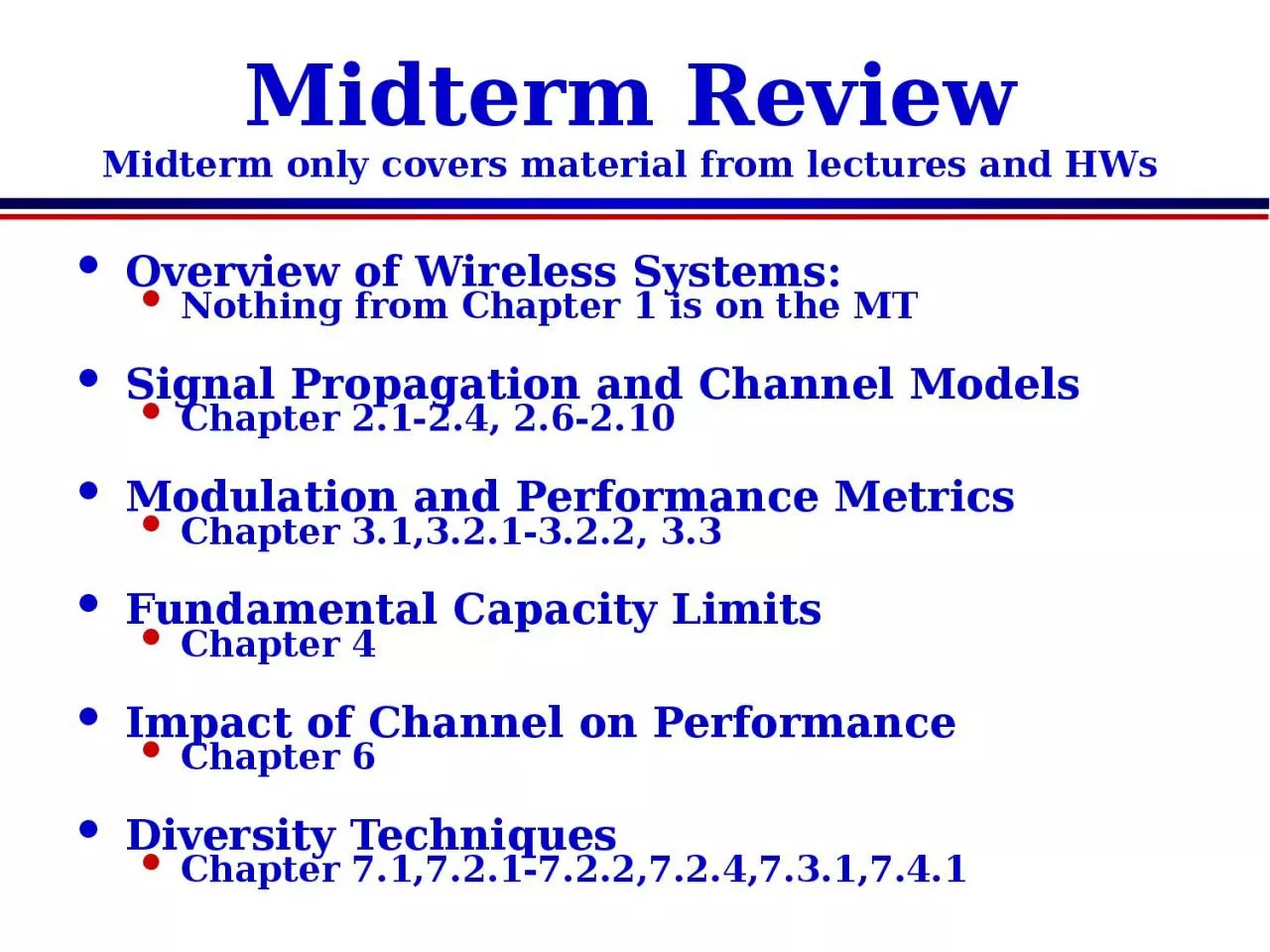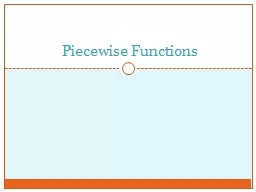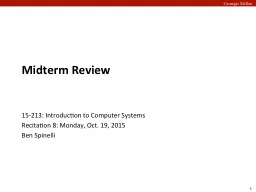PPT-Midterm Review Midterm only covers material from lectures and HWs
Author : luna | Published Date : 2023-11-08
Overview of Wireless Systems Nothing from Chapter 1 is on the MT Signal Propagation and Channel Models Chapter 2124 26210 Modulation and Performance Metrics Chapter
Presentation Embed Code
Download Presentation
Download Presentation The PPT/PDF document "Midterm Review Midterm only covers mater..." is the property of its rightful owner. Permission is granted to download and print the materials on this website for personal, non-commercial use only, and to display it on your personal computer provided you do not modify the materials and that you retain all copyright notices contained in the materials. By downloading content from our website, you accept the terms of this agreement.
Midterm Review Midterm only covers material from lectures and HWs: Transcript
Download Rules Of Document
"Midterm Review Midterm only covers material from lectures and HWs"The content belongs to its owner. You may download and print it for personal use, without modification, and keep all copyright notices. By downloading, you agree to these terms.
Related Documents













![[EBOOK] College Math Placement Test Prep Secrets: College Math Placement Test Study Guide,](https://thumbs.docslides.com/1006197/ebook-college-math-placement-test-prep-secrets-college-math-placement-test-study-guide-3-practice-exams-review-video-tutorials-2nd-edition-also-covers-edition-also-covers-the-accuplacer-and-tsi.jpg)
